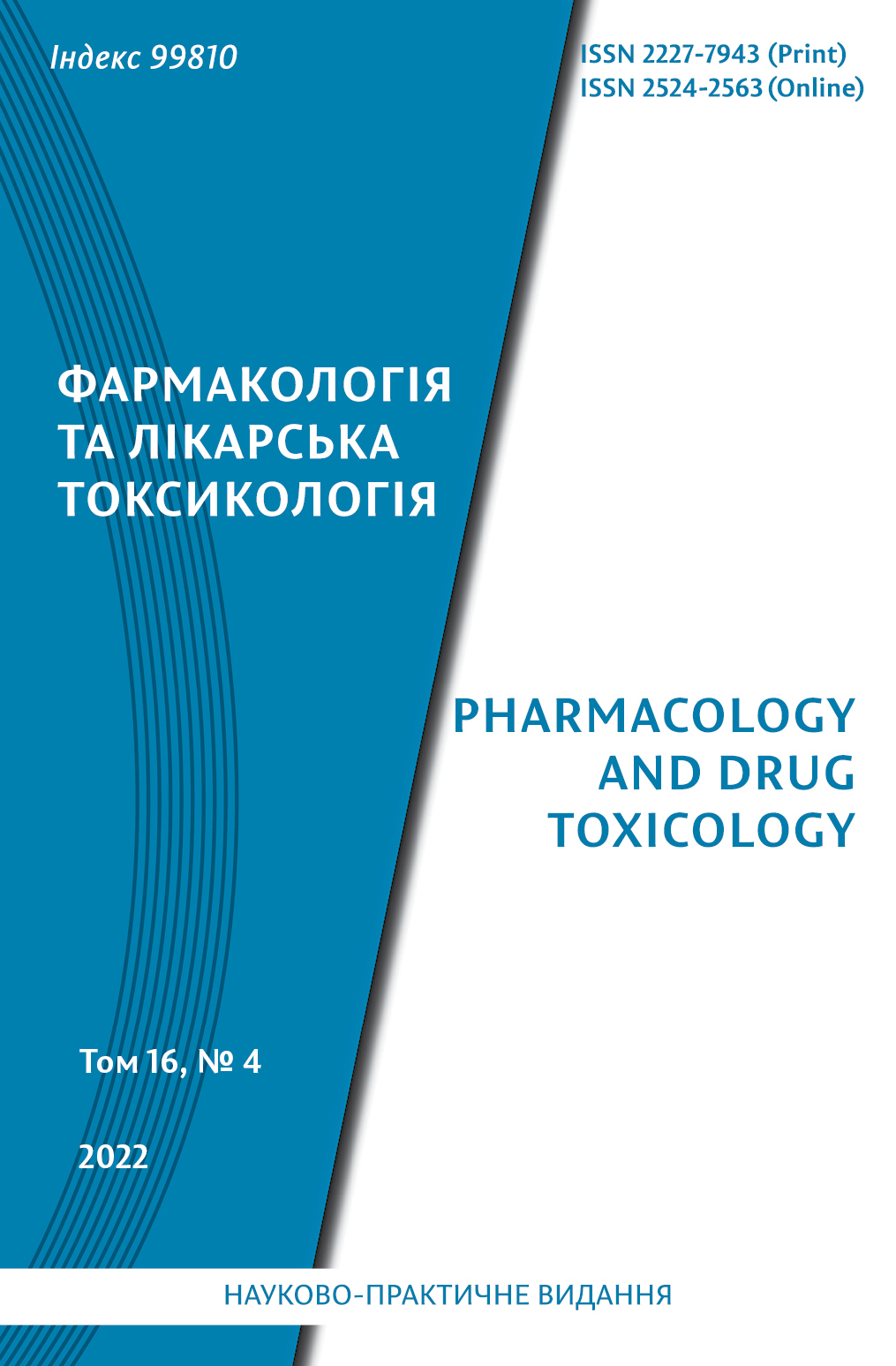Анотація
Упродовж останніх десятиліть стандартом у лікуванні більшості больових синдромів вважають нестероїдні протизапальні препарати (НПЗП), але спрямований пошук нових препаратів з відомими та принципово новими механізмами дії продовжується. Мета дослідження – проаналізувати дані джерел літератури щодо розробки нових протизапальних засобів з різною селективністю до ізоформ цикло- і ліпоксигенази та на прикладах продемонструвати можливості Drug Design в їхньому пошуку. У дослідженні наведено огляд сучасних даних щодо пошуку потенційних таргетних біологічно активних речовин (БАР) на основі мішень-орієнтованого моно-, ди- та мультицільового підходу. Представлені результати щодо селективних інгібіторів ізоформ циклооксигенази (COX) та ліпоксигенази (LOX) (прямий вплив – інгібітори ліпоксигенази та опосередкований вплив – через зв’язування з активуючим протеїном, FLAP), подвійних інгібіторів COX/LOX і COX/LOX/ TNF-α, COX/LOX/mPGES. Пошук нових інгібіторів ізоформ циклооксигенази та ліпоксигенази здійснюють серед БАР різних гетероциклічних систем модифікацією структури молекул відомих препаратів – кетопрофену, рофекоксибу, целекоксибу, ібупрофену, німесуліду, диклофенаку тощо. Означені підходи до визначення селективності ізоферментів COX, яка залежить від хімічних особливостей різних НПЗП. Натепер розроблена незначна кількість селективних інгібіторів COX-1, зокрема селективні інгібітори COX-1 виявлені серед похідних хіназоліну. Відкриття селективних інгібіторів COX-1 може започаткувати новий напрям у розробці протизапальних речовин, які здатні модулювати відповідь на хіміотерапію та змінювати резистентність до ліків. Першочергове значення має відкриття ефективних молекул з покращеним профілем безпеки. З метою зменшення шлунково-кишкової токсичності здійснюють пошук потенційних інгібіторів LOX. Спрямований пошук потенційних інгібіторів LOX здійснили серед нових піроло[1,2-a][1,2,4]тріазоло(тріазино-)-[c]хіназолінів, визначили їхню відповідність критеріям «лікоподібності – drug-like», виконали молекулярний докінг і скринінг in vitro. Структурні аналоги кетопрофену та рофекоксибу вивчали як потенційні інгібітори LOX-5. Показано значення мішень-орієнтованого підходу на основі поєднання сучасних in silico досліджень з класичним раціональним дизайном, синтезом і фармакологічним скринінгом.
